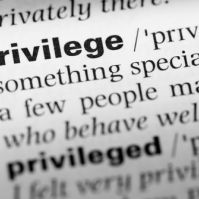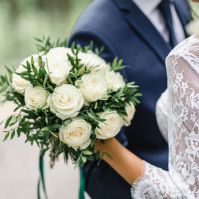 There is no shortage of wedding planning advice available. Most of it, however, uses heteronormative terms and practices that may make many of your guests feel uncomfortable and may not be sufficient to express the nature of your own relationship. Having a gender-inclusive wedding is a good way to clearly reflect your values and help all your guests feel welcome, no matter where they fall on the gender spectrum.
There is no shortage of wedding planning advice available. Most of it, however, uses heteronormative terms and practices that may make many of your guests feel uncomfortable and may not be sufficient to express the nature of your own relationship. Having a gender-inclusive wedding is a good way to clearly reflect your values and help all your guests feel welcome, no matter where they fall on the gender spectrum.
Language
Avoiding gendered wedding language can start as early as you send the invitations. Traditional etiquette insists that invitations be addressed to "Mr." or "Mrs." or "Ms." and that the husband or male partner's name is listed first. This heterosexist practice is easily overcome by skipping the titles altogether. Simply write the guests' names on the envelopes. If there is more than one invited guest in a household, list their names by using a pattern that doesn't take gender into account, such as alphabetical order.
During the ceremony, there are many ways you can make the language used more inclusive. Instead of referring to the bride and groom, you can ask that others just refer to you by your names or as a couple. You can even add a signature touch of whimsy by inventing your own gender-neutral term and incorporating it on the program and other printed materials. Instead of pronouncing you husband and wife, the officiant can pronounce you married.
Attire
Bridal gowns are traditionally white, and the groom's attire is traditionally a tux. As long as you're removing those terms, though, you might as well remove the rigid dress codes that accompany them. On your wedding day, you and your partner should wear what makes you feel special. Extend this freedom to your wedding party, too. No one likes being stuffed into an unflattering suit or dress. Give them some general guidelines, such as a color palette or a few style selections, and let them choose what makes them the most comfortable.
Decoration
Flowers are traditionally a big part of wedding planning, and so are the gendered expectations that accompany them. Rather than having bouquets for half the wedding party and boutonnieres for the other half, have everyone carry or wear the same arrangement. It can be hard to find a cake topper that isn't an image of a male and a female in traditional attire. Even if you find a same-sex option, the characters may still have a very cisgender appearance. Design your own topper or have the person who makes your cake add edible decorations to the top.
Roles
The rituals that lead up to and comprise the wedding ceremony can be anything you want them to be. Instead of expecting one side of the family to pay for everything but the rehearsal dinner, plan a ceremony you can afford on your own. Your families may want to help out, of course, but taking financial responsibility for the festivities is a good way to maintain more control over decisions that are made. Rather than planning separate bachelor and bachelorette parties, combine the celebrations, rename them, and invite everyone you want to be there.
The traditional wedding ceremony starts with the groom at the front and the bride coming down the aisle. You can make your entrance any way you choose, though. You can both enter from the sides and meet in the middle, or you can enter together. Have a processional if you want one, but do it on your terms. Skip rituals such as parents giving away one person to the other, the garter and bouquet tosses and opposite sex pairings on the dance floor at the reception. Anything that isn't specifically meaningful to you has no place in your wedding.
Your wedding day is meant to be a unique celebration of your relationship with your partner and the values you share. Gender inclusive choices make the ceremony your own and help all your guests feel at home.



